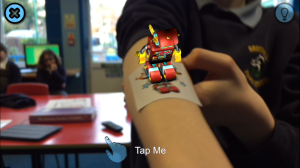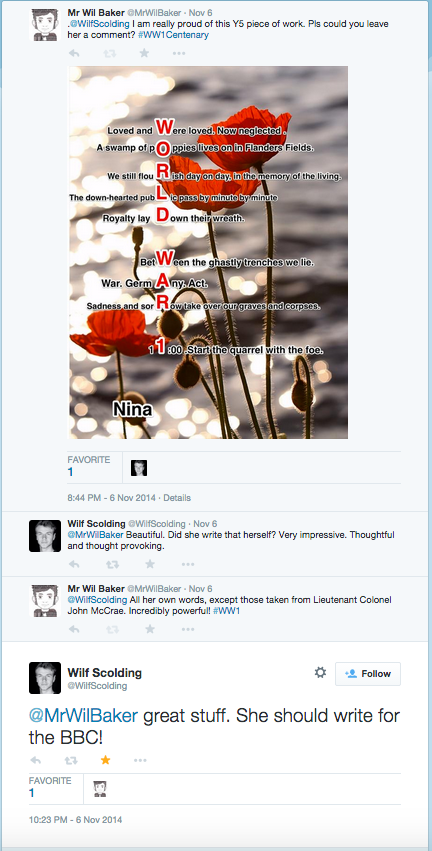Before our next meeting I thought I would give you a quick round-up of what has been happening on ‘The Street’. I have broken each week down into the stimulus, how the children worked, the end product and an example from our blogs.
Week 1
Stimulus – Sound file
Working style – Individual
Product – Description (setting)
Example – http://kidblog.org/5S2014-2015/tag/daniel/page/2/
Week 2
Stimulus – Work from Y3AD
Working style – Paired and individual
Product – Play script (simple)
Example – http://kidblog.org/5S2014-2015/4ab6011f-3625-4624-986b-47ea83dd159a/bird-robbery-on-the-street/
Week 3
Stimulus – 100th Anniversary of The Street (competition judged by Brian Moses)
Working style – Individual
Product – Haiku poem
Example – http://kidblog.org/5B2014-2015/60251e04-69a8-4498-a58e-8c0dba8c5ed0/the-cold-morning-3/
Week 4
Stimulus – Estate agent brochure / rightmove.co.uk / Images of houses
Working style – Small group
Product – Persuasive text
Example – http://kidblog.org/5B2014-2015/16e56fa2-09a6-4c29-aa8f-4d4a45ff1b50/no-99-the-street-detatched-seaside-cottage-for-sale-500000/
Week 5
Stimulus – Property description (see Wk 4)
Working style – Small group / paired
Product – Description (character)
Example – http://kidblog.org/5B2014-2015/d411c932-2869-463a-8dc8-cba4c0f97ce0/the-thompsons-farther/
Week 6
Stimulus – Peer review of character description (see Wk 5)
Working style – Paired
Product – Improved character description
Example – http://kidblog.org/5B2014-2015/a69358be-efdb-40b7-adbe-8e61f8370203/a-lovely-terrace-house-for-sale/
Additional
I have complied the character and property descriptions into one document.
http://kidblog.org/5B2014-2015/dfdc55c7-e2c2-43fd-b073-02b551d61c27/the-street-characters-and-property-using-slate/




